Elevate your home with expert tips on stylish décor, kitchen upgrades, and bedroom makeovers. Discover furniture ideas and real estate insights!
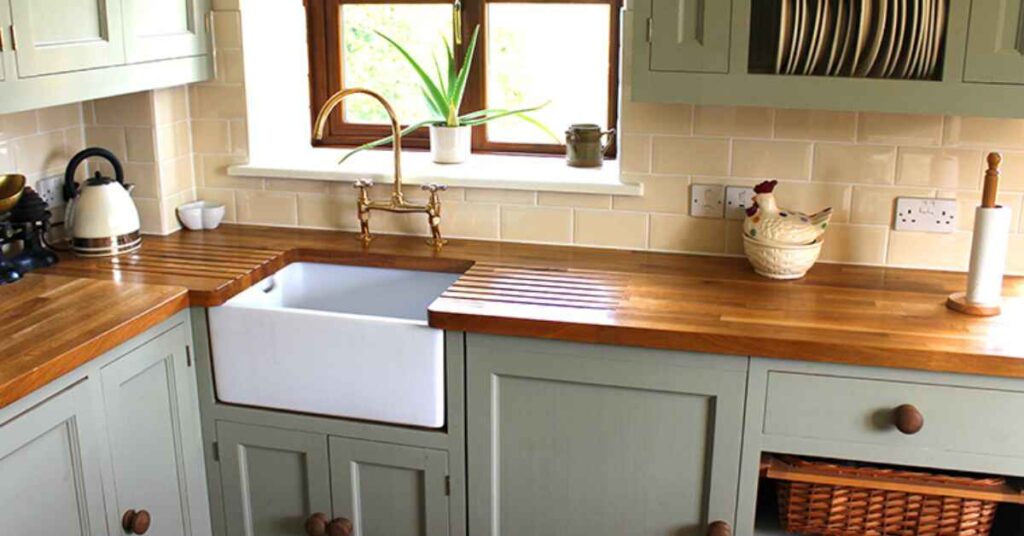
A farmhouse sink cabinet design features a deep, wide sink that extends slightly past the countertop, giving a classic, rustic look. This design is popular in kitchens for its practicality and vintage charm. It offers plenty of space for washing large pots and pans, making it both stylish and functional.
Looking to add a touch of rustic charm to your kitchen? A farmhouse sink cabinet design not only offers a vintage feel but also provides ample space for all your kitchen tasks. Discover how this timeless style blends beauty and function effortlessly.
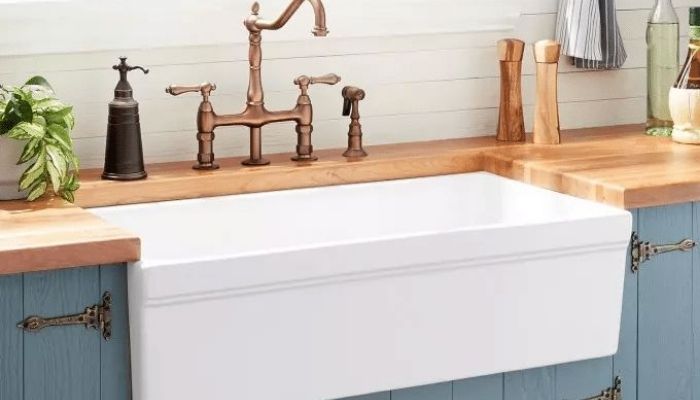
A farmhouse sink, also known as an apron-front sink, is designed with a deep basin and an exposed front that extends slightly beyond the countertop. This style dates back to the 17th century, where it was used for its large capacity to hold water and wash dishes. The sink is typically made from durable materials like fireclay, cast iron, or stainless steel, ensuring long-lasting functionality.
Modern farmhouse sinks are popular in kitchens for their blend of traditional aesthetics and practicality. They offer ample space for washing large cookware and can accommodate heavy-duty kitchen tasks. These sinks are often paired with rustic or vintage-style cabinetry, adding a warm, inviting look to any kitchen space.
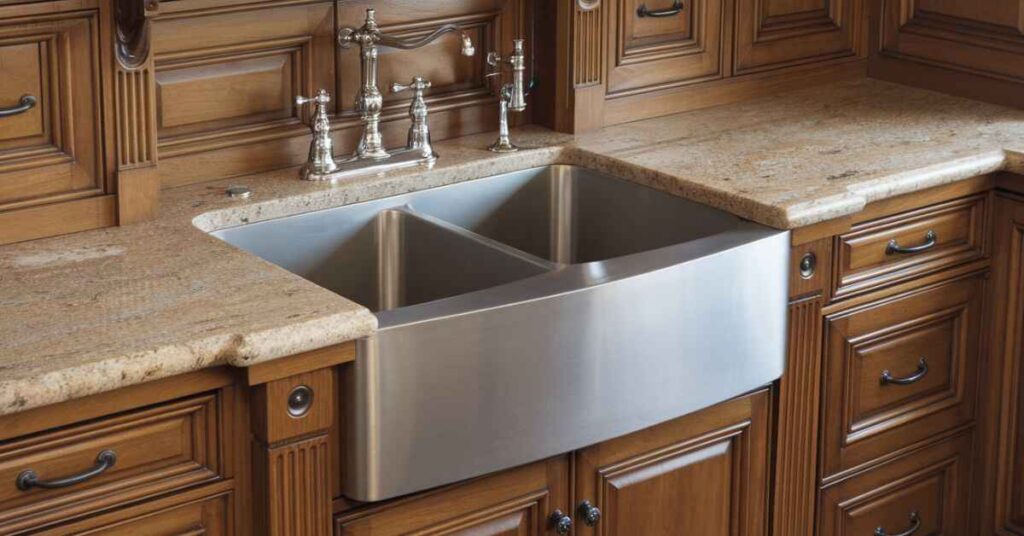
An apron front sink base cabinet must be sturdy enough to support the heavy weight of a farmhouse sink, often requiring reinforced framing. The cabinet should have a front cutout to accommodate the sink’s exposed apron and allow it to sit flush with the countertop. Proper ventilation and drainage considerations are essential to prevent water damage. Additionally, the interior space should be optimized for plumbing fixtures and storage needs.
Face frame cabinets have a wooden frame attached to the front of the cabinet box, providing added strength and a classic appearance. The doors are mounted onto this frame, creating a slightly smaller opening compared to frameless cabinets. This style is traditional and is often preferred for its durability and ease of alignment.
Frameless cabinets, also known as European-style cabinets, lack the front frame, offering a more modern and sleek look. They provide greater accessibility with wider openings and maximize storage space inside the cabinet. This design is popular in contemporary kitchens for its clean lines and seamless finish.
When constructing a cabinet to suit a sink then there are specific measurements that need to be taken to ensure that the sink fits into the cabinet apertures tightly. The cabinet must also be strengthened in order to support the load of the sink and can also be designed to receive plumbing installations.
Modifications may be done to accommodate the beginning of the sink through cutting of holes in the cabinet for the apron or alteration of the internal part for drainage. There is always need to make sure that the sink which is a very important part of a kitchen is well installed and is in harmony with the rest of the layout of the kitchen.
Also Read this Blog: modern kitchen island lighting ideas in 2024
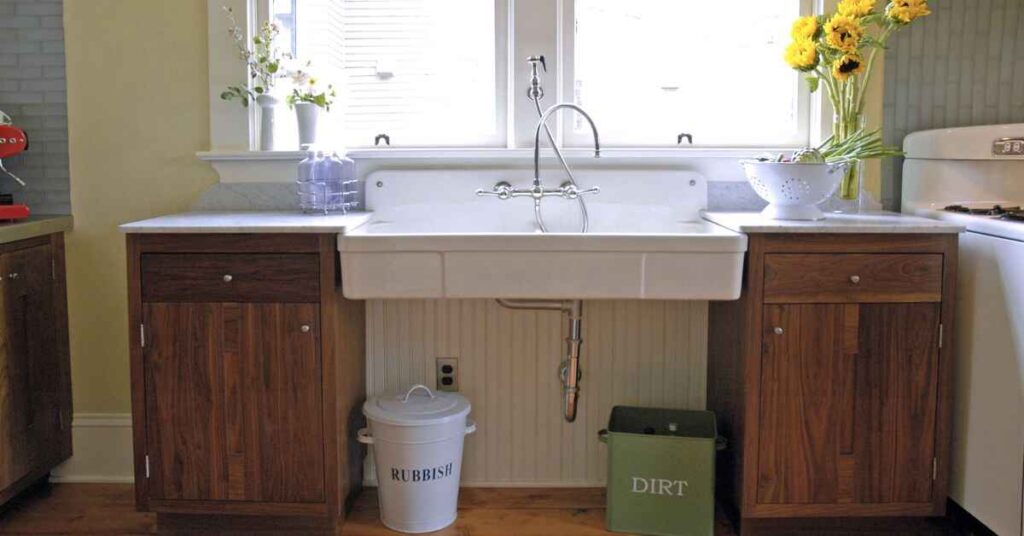
Since the base cabinet of a farmhouse sink is primarily built to support an apron front sink, store utensils and dishes and, at the same time, conceal all the plumbing, much prior planning and use of good material is required to ensure it works out well.
A farmhouse sink base cabinet is designed specifically to support an apron-front sink. It features a reinforced structure to bear the heavy weight of these large sinks. Typically wider than standard base cabinets, it allows easy installation and a secure fit. These cabinets also leave room underneath for storage and plumbing access.
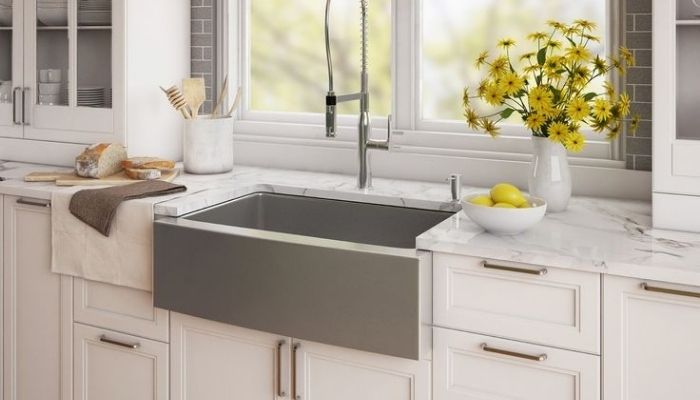
When choosing dimensions, ensure your cabinet is large enough to accommodate the sink. Farmhouse sinks often require a base cabinet at least 33 inches wide, with custom sinks needing more space. Always measure carefully to ensure a snug fit for the sink. Also, consider the height and depth of the cabinet for comfortable use. Proper dimensions ensure both functionality and aesthetics.
When building your farmhouse sink base cabinet, the material you choose matters. Solid wood is a durable and classic option, offering long-lasting strength. Plywood provides a more budget-friendly alternative with decent sturdiness. MDF, though less durable, can work well in low-moisture areas. Make sure the material supports the weight of the sink without warping over time.
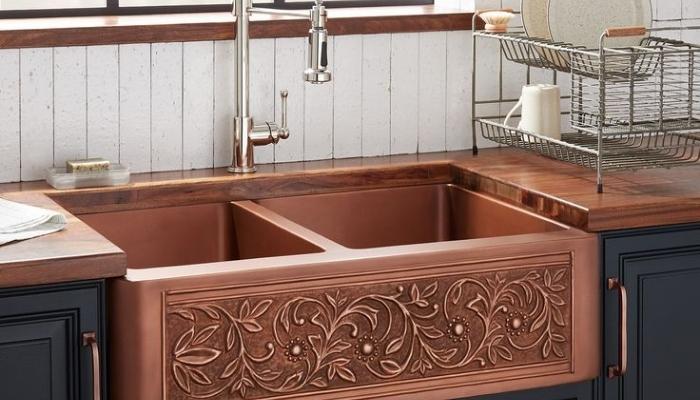
Building a farmhouse sink base cabinet requires basic tools like a circular saw, drill, and measuring tape. Reinforcing screws, clamps, and wood glue are also essential for assembly. Depending on your design, you may need brackets for additional support. Always use high-quality hardware to ensure the cabinet remains strong under the weight of the sink. Proper tools and hardware are key to a secure build.

Proper planning for plumbing is critical when designing your farmhouse sink base cabinet. Ensure there’s enough room for pipes and drains underneath the sink. Accurate measurements help avoid plumbing issues after installation. Leaving extra space for future plumbing adjustments can be a smart move. Properly accounting for drainage ensures the cabinet won’t interfere with water lines.
To enhance your farmhouse sink base cabinet, consider adding custom features. Built-in drawers or shelving can provide useful storage for kitchen essentials. You can also incorporate decorative elements like molding or paneling for a more finished look. These additions can elevate both functionality and style. Customizing allows you to tailor the cabinet to your kitchen’s design.
Choosing between DIY and professional installation depends on your skill level. Building your own cabinet allows for more personalization and cost savings. However, professional installation ensures precision and can handle complex designs or tricky spaces. Consider the size of your project and the time you have available. Balancing cost and expertise is key to a successful installation.

Building a sink base cabinet box starts with accurate measurements. Begin by cutting plywood or MDF to the desired dimensions for the sides, bottom, and back panels. Assemble these pieces using wood glue and screws for a sturdy frame.
Next, add reinforcement with additional supports, especially around the sink’s opening. Ensure proper space for plumbing by cutting out holes in the back panel. Once the box is assembled, sand the surfaces for a smooth finish, preparing it for paint or stain.

Adding a farmhouse sink to an existing cabinet begins with removing the countertop and cutting the front of the cabinet to accommodate the sink’s apron. Ensure your measurements are precise before cutting.
After cutting, reinforce the cabinet with additional support beneath the sink to handle the weight. Once the sink is in place, reconnect the plumbing, making adjustments as needed to fit the new setup.

Start by removing the cabinet doors and drawers to access the interior. Cut away the cabinet front to create space for the sink’s apron. Reinforce the cabinet frame for additional support.
Measure the sink’s dimensions and ensure the cabinet cutout matches precisely. Test the sink in the opening to confirm a proper fit. Make any necessary adjustments before final installation.
Update the plumbing to fit the new sink configuration, ensuring proper alignment. Modify the countertop to accommodate the farmhouse sink’s dimensions. Secure all components to complete the installation.
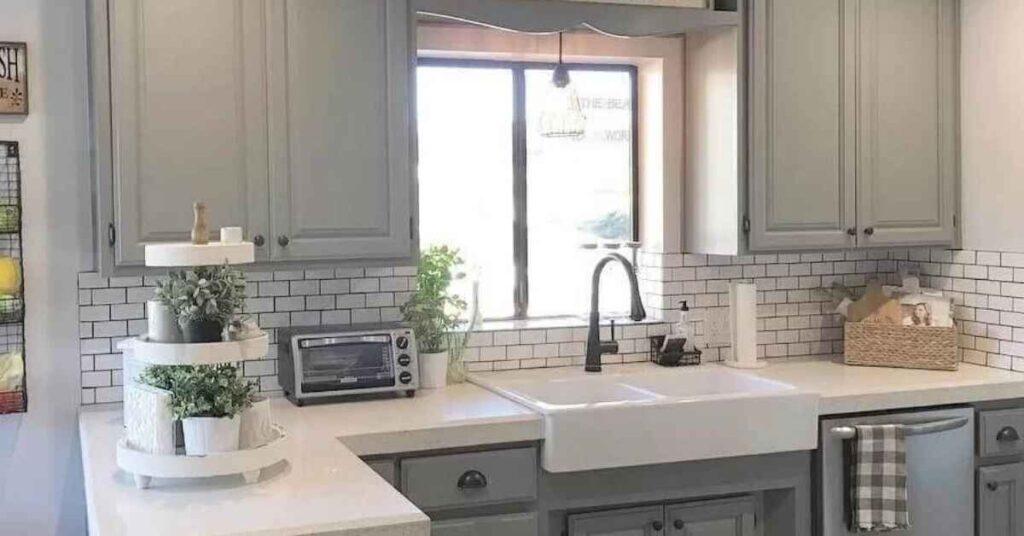
IKEA provides farmhouse sink cabinets that come with a pre-drilled frame to fit standard sinks. These cabinets are often designed with adjustable shelves and durable materials for flexibility and support. Ensure you choose the correct size and style to match your kitchen needs. Follow IKEA’s assembly instructions carefully for best results.

A freestanding farmhouse kitchen sink cabinet is a standalone unit that doesn’t require wall attachment. It features a sturdy base to support the sink and often includes storage space underneath. Ideal for adding rustic charm, it’s easy to move and install in various kitchen layouts.

A 30-inch farmhouse sink cabinet is designed to fit a sink of similar width. It provides ample space for the sink and typically includes storage below. Ensure the cabinet’s dimensions match your sink’s specifications for proper installation. Check for support features to handle the sink’s weight.
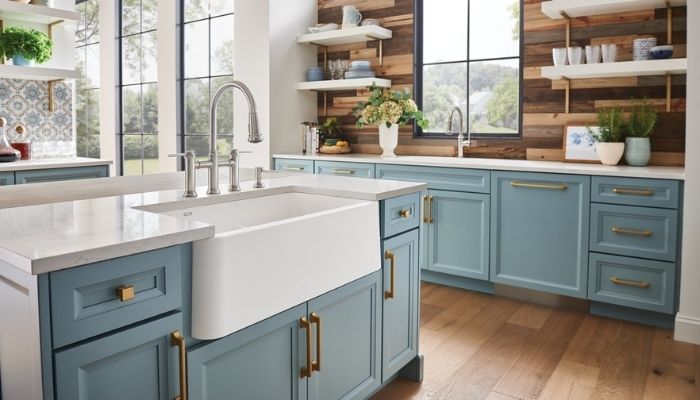
Farmhouse sink cabinet dimensions vary but typically accommodate sinks with larger front aprons. Standard widths range from 30 to 36 inches, with depth and height adjusted to fit your kitchen layout. Measure carefully to ensure a proper fit for both the sink and cabinet.
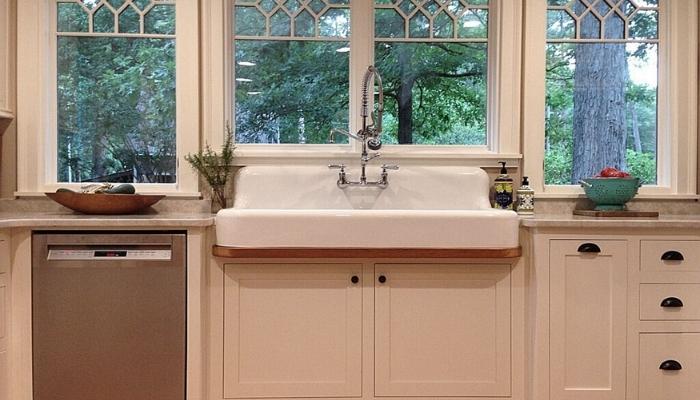
An unfinished farmhouse sink base cabinet is a raw wood unit ready for customization. It allows you to stain or paint according to your kitchen’s design. This type of cabinet provides flexibility in finishing touches and ensures a perfect match with your decor. It is ideal for DIY projects where you want to add a personal touch.
Also Read this Blog: light grey kitchen cabinets ideas in 2024
Farmhouse sink cabinets are built deeper and sturdier to support the weight and size of apron-front sinks. They often require reinforced framing to ensure durability and fit the sink snugly.
Modifications may be needed, as most standard cabinets lack the support and cutout for apron-front sinks. Customizing or reinforcing the cabinet ensures the sink fits properly and securely.
Shaker-style cabinets are a favorite for farmhouse sinks, offering a simple, classic look. Raised panel and beadboard styles also complement farmhouse sinks, enhancing rustic or traditional aesthetics.
A farmhouse sink typically requires a cabinet 3 inches wider than the sink itself. For example, a 30-inch sink fits best in a 33-inch cabinet, allowing space for mounting and adjustments.
Farmhouse sink cabinets are usually pricier than standard ones due to custom reinforcements. Prices vary based on materials, but their durability and style often make them worth the investment.
Farmhouse sink cabinet design is characterized by its sturdy, apron-front construction that supports heavy, deep sinks. It often includes ample storage space with shelves or drawers for functionality. The design typically features a rustic or vintage aesthetic, adding charm to the kitchen. Cabinets can be customized with various finishes to match your style. This design merges practicality with classic appeal, making it a popular choice for many kitchens.